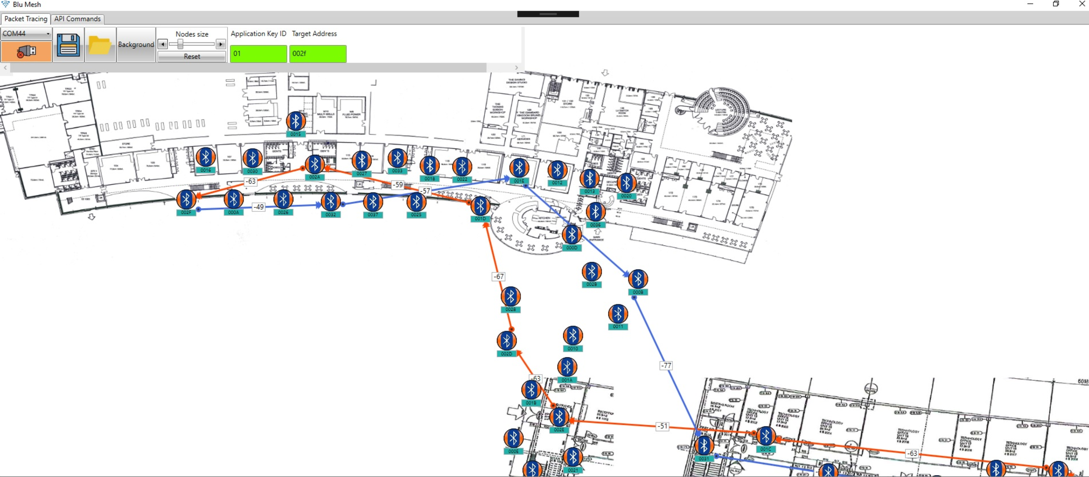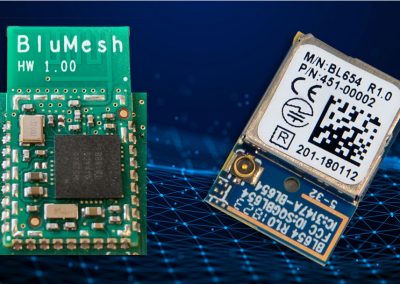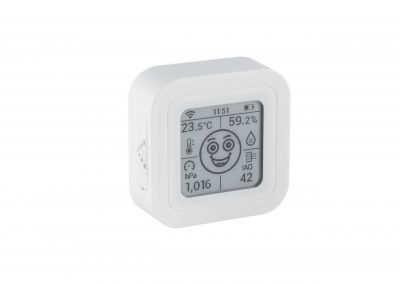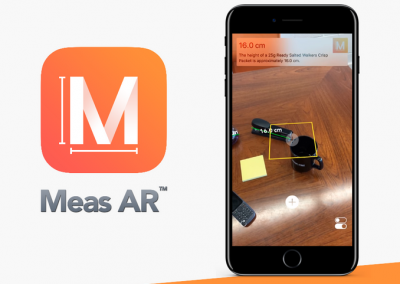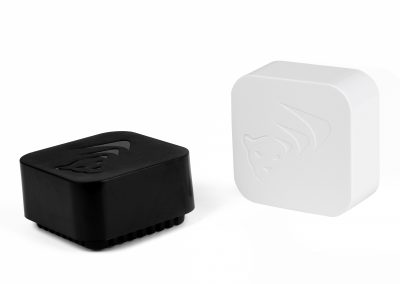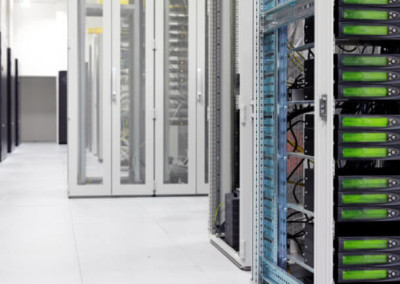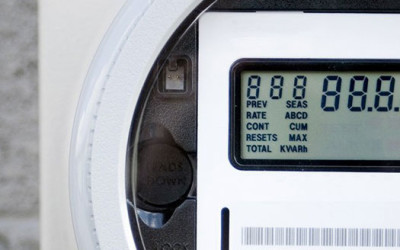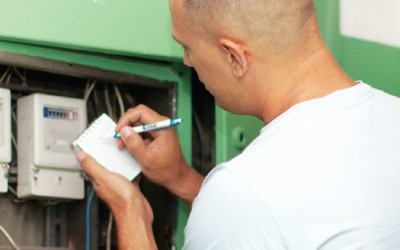
BluMesh® is Mesh-Net’s new proprietary Bluetooth5 MESH networking protocol developed for Industrial IoT (IIoT) applications including Smart Buildings, Lighting, Metering, Wireless sensor networks, Renewable Energy, Data Centres, Remote Monitoring, Industrial and Home automation.

Powerful
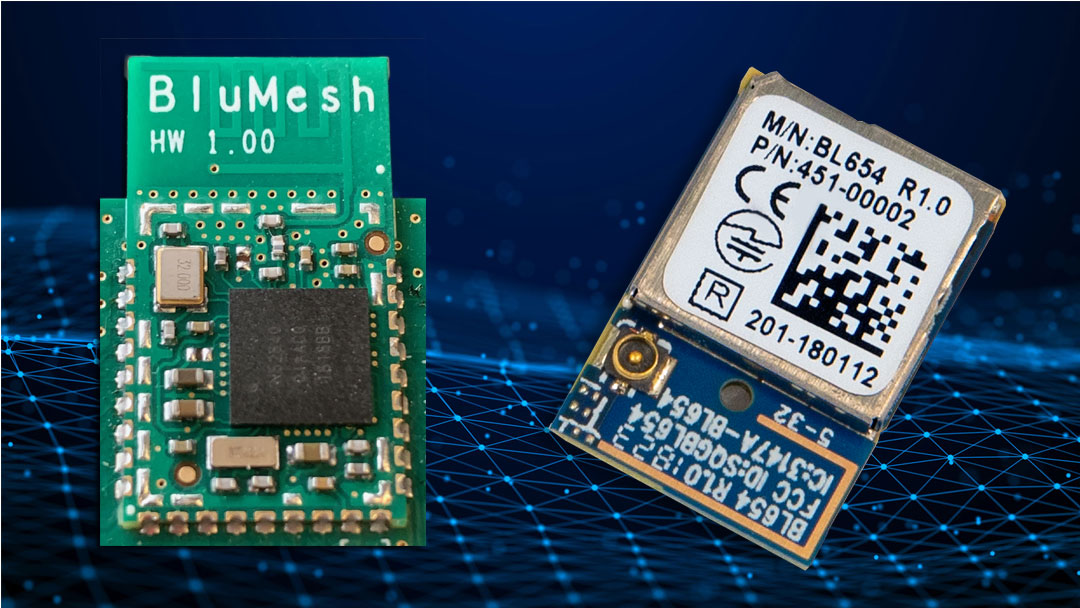
Simple to use and deploy
Secure
BluMesh has multi layered security built in. Separate network keys and application keys with end to end data encryption using industry standard AES-128. Capability to remotely refresh keys mitigates against trash can attacks.
Scalable
Propagate data through hundreds or thousands of nodes. BluMesh allows for dense and large scale deployments in the most challenging enviroments.
Reliable
With every node in the network capable of communicating with every other node, builds in network redundancy with no single point of failure.
Bluetooth LE v4 vs Bluetooth LE v5
BluMesh works using Bluetooth Low Energy (BLE) 5.0; these are the key differences between BLE version 4 and BLE v 5:
Bluetooth Version |
Range |
Speed |
Message Length |
Data Transfer Rate |
Maximum Output Power |
|---|---|---|---|---|---|
4.0 |
60m (200 feet) | 25 Mbit/s | 31 bytes | 1Mb/s | 10mW |
5.0 |
1500m (5000 feet) | 50 Mbit/s | 255 bytes | 2Mb/s | 100mW |
BluMesh vs Bluetooth Mesh v1
These are the key differences between BluMesh and Bluetooth Mesh v1.0:
Bluetooth version |
5.0 |
4.0 |
Data Payload |
199 bytes | 10 bytes |
Number of hops |
Unlimited | 127 |
Configuration |
Simple API AT Type Commands | Custom complex coding |
Mesh Network Setup |
In minutes (see video below for a demo) | Several days / weeks based on Configuration |
Maximum number of Nodes |
524,287 | 32,767 |
Security |
16 byte IV | 4 byte IV |
BluMesh Performance
Read our paper to find out more.
BluMesh Quick Start Guide
See how easy it is to setup a BluMesh Bluetooth 5 mesh network within minutes.
BluMesh Software
BluMesh Software allows developers to easily understand mesh networking setup and enables them to propagate their own data payloads across the mesh network.
- Visualise your network with packet tracing
- Quick Start Guide
- Simple API Commands
- Map View
- Developer Console
- API Documentation
BluMesh Evaluation Kit
..ChatThe BluMesh Evaluation Kit allows for quick and easy evaluation of BluMesh mesh networking technology for your application.
The BluMesh Eval Kit has the following sensors onboard:
- Temperature Sensor
- Humidity Sensor
- Gyroscope
- Accelerometer
- 3 Push Buttons
- 5 LEDs
Developers can quickly get familiar with the easy API commands to configure and test their mesh network. Option to write code for the micro or communicate directly with the BluMesh module via USB.
Chat to us or contact us for more information.
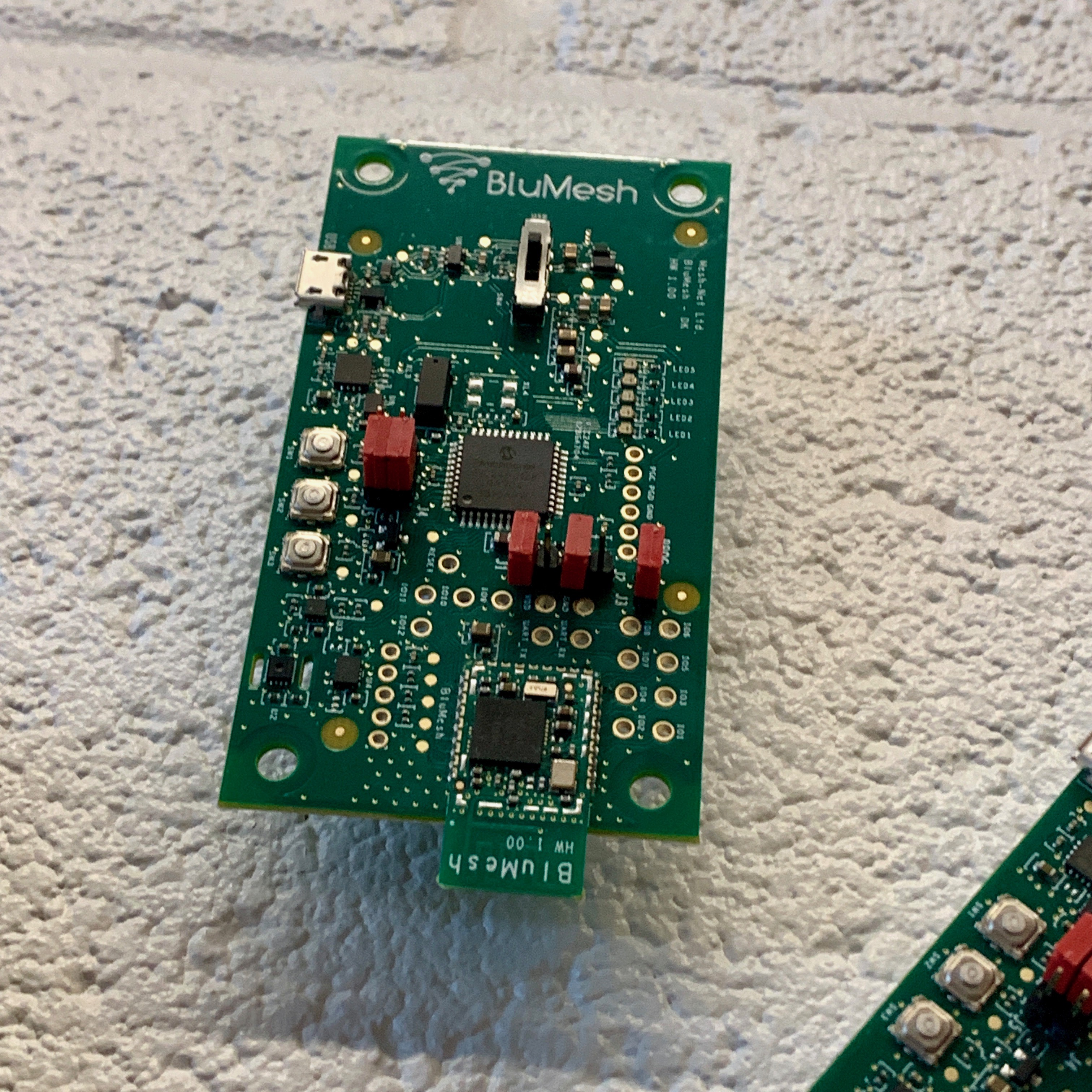
Experience BluMesh
Get in touch to arrange a live demo. We are looking forward to hearing from you.
Recent Projects
Mesh-Net’s goods-in-transit wireless tracking in the news
Mesh-Net’s Wireless Fleet Management System developed for logistics security company, SecureSeal, has been featured on Warehousing & Logistics International. Read the full article here:...
A Snap-Shot of Smart Metering
Smart Metering today is one of the most common words in the world of Metering. With the development in technology and availability of numerous chipsets for various functions, it is making true smart metering a reality. To understand the status of the industry, we...
Wireless Automatic Meter Reading
As the name implies, the term Automatic Meter Reading (AMR) is commonly used when your utility meters are read without any user intervention. Traditionally, meter reading required (and still common) personnel to walk to the meters and record the readings off the dials...
Intelligent Street Lighting Systems
A smart (or intelligent) street lighting system incorporates a network of street lamps that communicate with each other and provide consumption data to a local data concentrator. The data concentrator manages the network and collects the consumption data from the...

